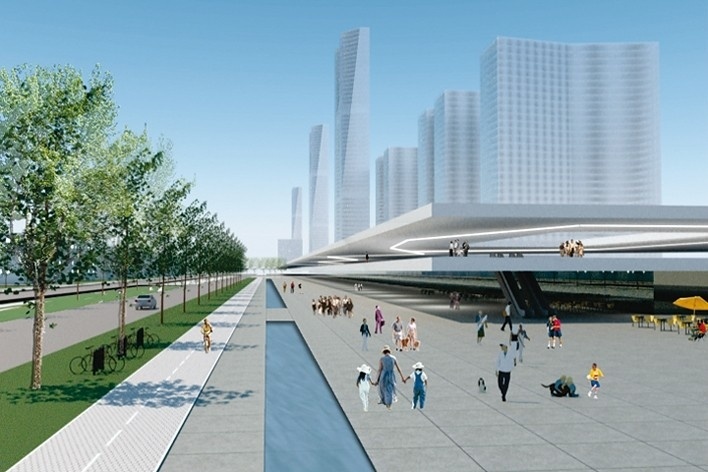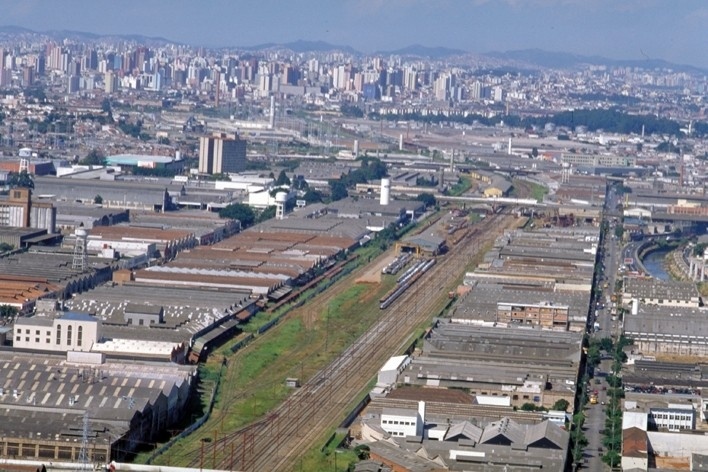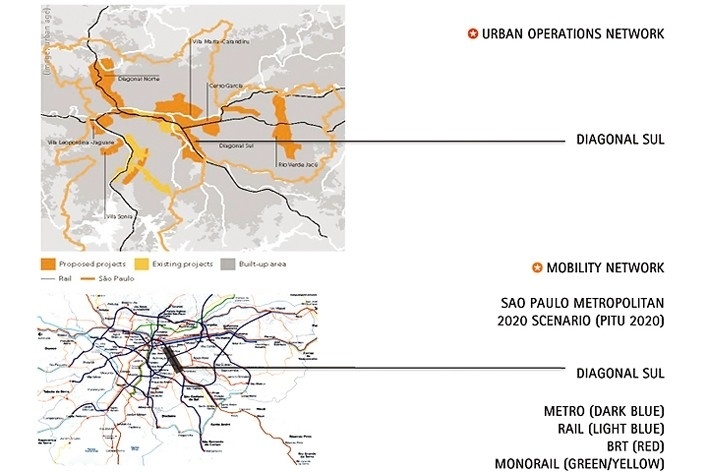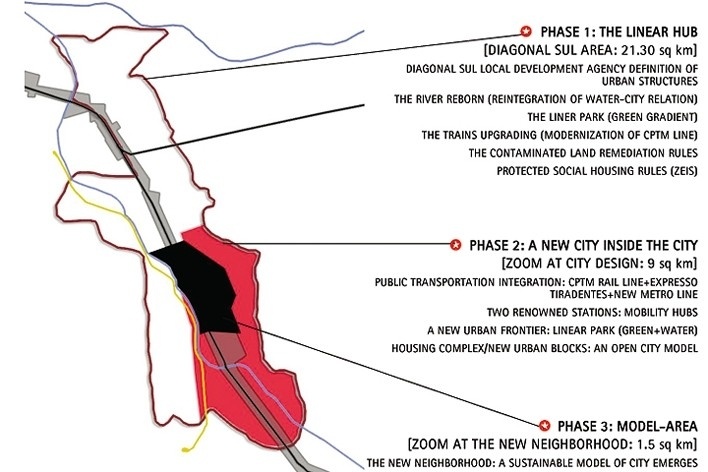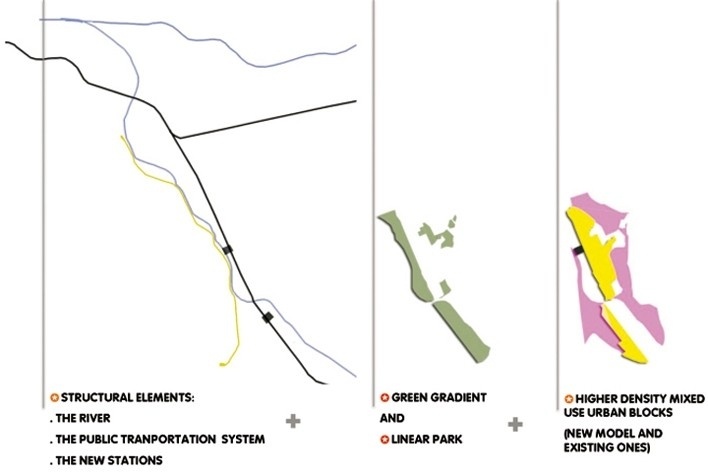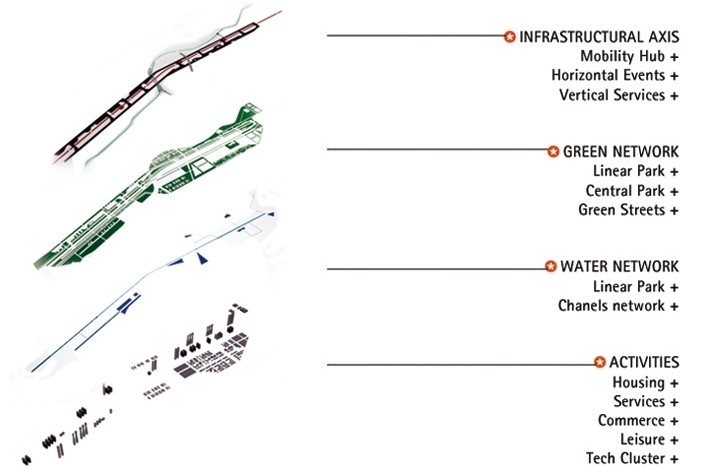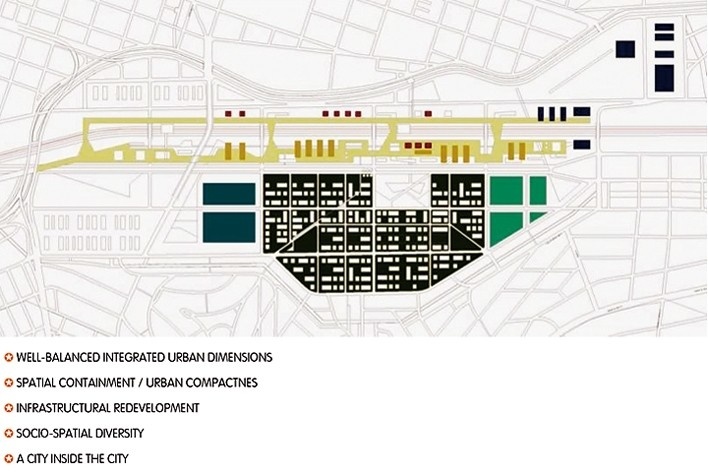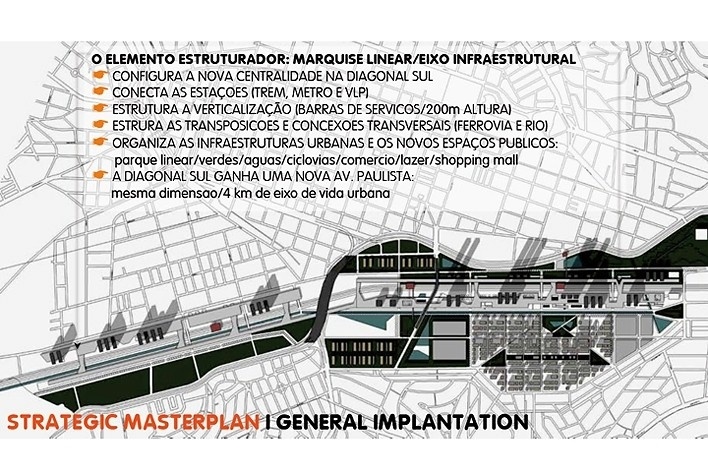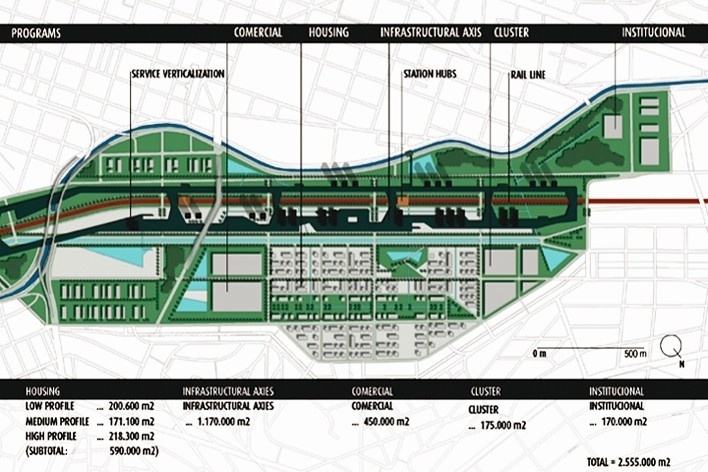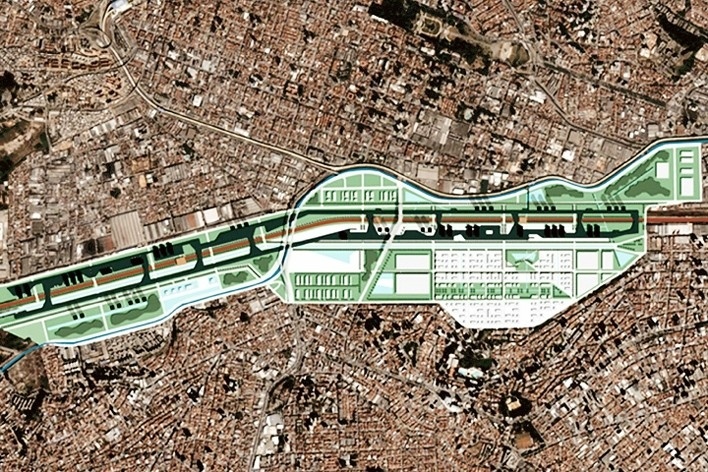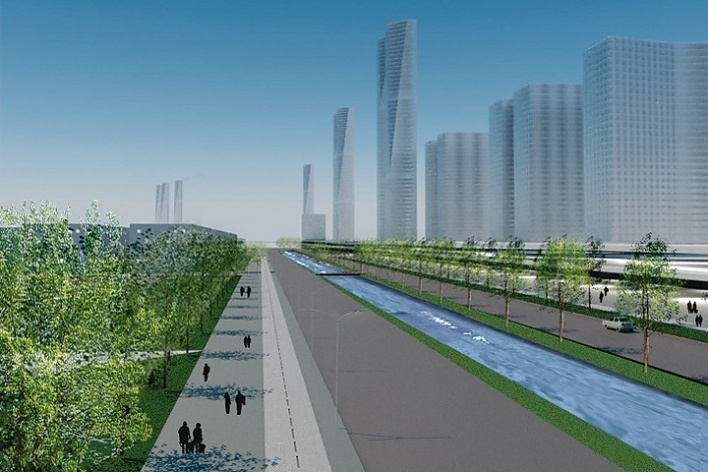Why To Do
- The population of the central district has declined steadily since the 1970s. Despite ambitious revitalisation plans, wealthy residents and businesses still move out. The population is growing most in peripheral areas with the poorest infrastructure.
- Thesis: the reuse of central city urban voids instead of peripherical sprawling. Compact city = sustainable city.
What to do
- To operate on the wastelands and to use the potentiality of the urban voids.
- The existing infrastructe should support the development of the new metropolitan territory.
- The fragments of the territory could articulate a new “city-inside-the-city”.
- Contemporary urban projects should operate with dinamics, flexibility and strategies: a dinamic urbanism.
- The challenge of contemporary architecture is to work on the existing city, instead of its substution/negation: to restore the existing city.
How to do
- The creation of a local development agency.
- Private-publicpartnership wich allows the contuinuity of a.
- A project for the urbanrevitalization of an obsolete, abandoned industrial neighbourhoodalongthediagonal sul urbanoperation (railroad linear axis).
- Investments from the real estate on the development of a new sustainable neighborhood.
The opportunity
The territorial descontinuities of diagonal sul offer a new urban project opportunity: to develop a metropolitan territory, a compact city inside the city, a sustainable neighborhood within:
Well-balanced integrated urban dimensions
This new city model could be developed focusing the best delivery mechanisms to create high quality urban environments. The new territory is a unique opportunity to pioneering develop a strategy of urban intervention which contemplates both and well balanced the spatial/design aspects of the question as well as the process/delivery mechanisms of an urban project.
Urban compactness
It implies intensification, high density and mixed uses as opposed to low density, mono use urban sprawling process. The compact city development model has a potential for achieving more sustainability.
Infrastructural redevelopment
The reuse of existing infrastructure is more sustainable than the creation of new areas.
Socio-spatial diversity
Specific mechanisms of tax incentives could be designed to arrest the decline in physical fabric in old industrial urban areas, encouraging new developments and including the combination of a wide mix of land use, in balance with its surroundings.
A city inside the city
- Create new quality in public spaces.
- Propose joint ventures between public power and the private sector to stimulate the cleaning of contaminated areas.
- Promote public equipments of symbolic significance to the region and of intense social use.
- Enhance public investments (municipal, state and federal).
- Atract and articulate public, private and institutional investments.
- Ensure integrated sustainability of all actions (organizational and finantial).
- Generate a global and includent pattern of urban regeneration.
- Improve the two main urban elements to rearticulate the area (river/water and train line/mobility).
General objectives
- Propose new use configurations the area.
- Encourage the mix of uses to stimulate urban dynamics.
- Request the creation of new solutions for the generation of work jobs and income.
- Dynamize the urban assets of the area.
- Rearticulate both borders along the rail line.
- Improve the conditions of people circulation and the distribution of goods and services.
- Create new quality in public spaces.
- Propose joint ventures between public power and the private sector to stimulate the cleaning of contaminated areas.
- Re-create a territorial identity of the region.
- Promote public equipments of symbolic significance to the region and of intense social use.
- Enhance public investments (municipal, state and federal).
- Atract and articulate public, private and institutional investments.
- Ensure integrated sustainability of all actions (organizational and finantial).
- Generate clear rules.
- Generate juridical security.
- Generate a global and includent pattern of urban regeneration.
- Improve the two main urban elements to rearticulate the area (river/water and train line/mobility).
The Diagonal Sul challenge
The discussion
- Private initiative – the city – academic community.
- Suit long term urban planning.
- Incentive private investments.
- Sustainable communities, quality of live.
- Optimize use of existing infrastructure, eliminate pollution.
- Generate wealth, increase tax revenues for the city.
The result
- Homes
- Jobs
- Services
- Health
- Education
- Entertainment
- No ghettos, social inclusion
- Mixed use (all close by)
- Public transport
- Quality of life
- Low carbon / high energy efficiency
Negotiation proposal
The tools
- Urban interventions in the City of São Paulo follow the “plano diretor estratégico 2002 – 2012 “ . This law is integrating alternative tools to implement “operações urbanas”. Specific laws are created for each “operação urbana”. Operational procedures and conditions can thus be defined according to each specific requirement.
- The federal law “Estatuto da Cidade (No 10.257, 10th of July 2001)” is providing directives and tools for the proposed urban intervention. The most essential tool is the “concessão urbanistica”. Here, the city can delegate the activities necessary to approve and execute the urban intervention to private initiative.
The proposal
- Discussion and negotiation with the City and the academic sector will.
- Integrate with metropolitan planning.
- Line up with present and future mobility requirements.
- Reduce carbon emissions, eliminate pollution.
- Offer social inclusion.
- Create local economic growth potential (more jobs).
- Provide public services, culture and entertainment.
Mecanisms to proceed with success
The potentially successful mechanism
- Using realistic and technically sound information.
- Following the existing legislation, choose well succeeded examples.
- Using the world best urban design professionals.
- High level negotiations to allow for fast decisions.
- Enthusiasm of transforming an area without life into an exciting city.
- The most helpful support the city can give to deliver diagonal sul
- Reduce bureaucracy
- Take quick decisions
City´s gains
Additional yearly tax revenue
- IPTU (property tax): R$ 75m p.a.
- New jobs and new population (i.r. And others): R$ 120m p.a.
- Iss (service tax): R$ 140m p.a.
- Increasing productivity of transferred industry: R$ 75m p.a.
- (total): R$ 410m p.a.
- Tax revenue during construction time: R$ 150m
- Sales of cepac´s (munic.certif. To increase constr.area): R$ 500m
Phasing
Phase 1: The Linear Hub
- [Diagonal sul area: 21.30 sq km]
- Diagonal sul local development agency definition of urban structures
- The river reborn (reintegration of water-city relation)
- The liner park (green gradient)
- The trains upgrading (modernization of cptm line)
- The contaminated land remediation rules
- Protected social housing rules (zeis)
Phase 2: A New City Inside the City
- [Zoom at city design: 9 sq km]
- Public transportation integration: cptm rail lineexpresso tiradentesnew metro line
- Two renowned stations: mobility hubs
- A new urban frontier: linear park (greenwater)
- Housing complex/new urban blocks: an open city model
Phase 3: Model-Area
- [Zoom at the new neighborhood: 1.5 sq km]
- The new neighborhood: a sustainable model of city emerges
Masterplan Strategic Elements
Infrastructural axis
- Mobility hub
- Horizontal events
- Vertical services
Green network
- Linear park
- Central park
- Green streets
Water network
- Linear park
- Chanels network
Activities
- Housing
- Services
- Commerce
- Leisure
- Tech cluster
Note
1
The urban proposal was developed by Carlos Leite (FAU-Mackenzie), Bernd Rieger (Rieger Reurbanização) and Eduardo Della Manna (Secovi-SP). The work complements the conceptual part developed by Nadia Somekh and Carlos Leite (Implementing Urban Change). Both parts were presented at Urban Age South America 2008 under the sponsorship of the London School of Economics.
team
Authors
Carlos Leite (Mackenzie University), Urban Project Designer
Bernd Rieger (Rieger Reurbanização), Urban Developer
Eduardo Della Manna (Secovi-SP), Urban Project Designer
Consultancy
Claudio Bernardes (Secovi-SP), Development
João Crestana (Secovi-SP), Development
Joerg Spangenberg (FAUUSP/Bauhaus), Urban Sustainability
Lourenço Gimenez (FGMF), Urban Mobility
Thiago Duarte (Obra), Urban Design
João Paulo Daolio (Obra), Urban Design



